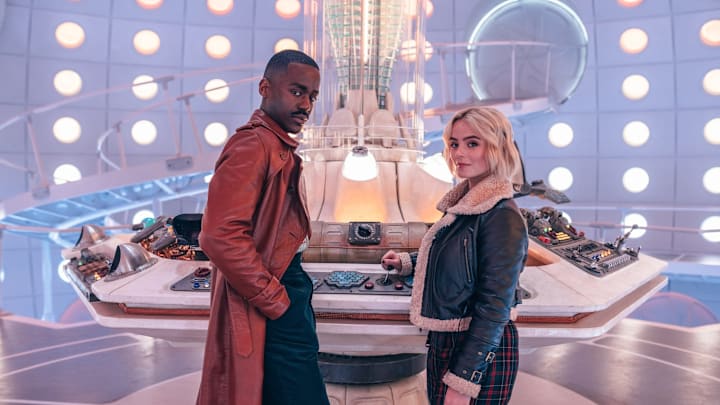One aspect of Doctor Who that truly makes it stand out from most other sci-fi series – and, indeed, most TV series in general – is that it’s one of the very few shows that’s aimed at children and adults in equal measure. It’s an extremely tricky balance to get right, but when it does, it gives us some brilliant stories.
As a Brit living in the US, what’s often surprised me about Doctor Who is how it’s perceived by North American audiences. I’ve discussed with friends both American and Canadian about how the show is meant to be for children just as much as adults. Quite often, I’ve been met with surprise, sometimes even disbelief. There’s the perception that the show is really for maturer sci-fi fans, with people in their late teens being the youngest audience.
But children have long been an important part of the show, from its very beginning. When Doctor Who began in 1963, a key aspect of this new TV series was that it was meant to educate children on matters of both science and history – while still telling thrilling adventure stories, of course.
Over time, the show eventually dropped the educational aspect, at least partly. But children still remained a core part of the audience. This was true for most of the Classic Series, and it's been true of the New Series, as well.
Not only is there a great deal of marketing aimed towards children in the UK, such as toys and action figures. But children have even helped to contribute to the TV series. For example, both the Abzorbaloff from "Love & Monsters" and a TARDIS set seen on "The Doctor's Wife" were designed by children who had participated in Blue Peter contests. (Blue Peter is an extremely popular children's show in the UK.) As well as giving so much to children, children have also given a lot back to the show.

A delicate balance
The most important aspect of Doctor Who is how it handles the balance of child and adult audiences. This is a key reason why the show is one of the trickiest to get right. There’s a big risk of going too far in either direction.
For example, if you aim the show too much at children, it might appear to be too silly and too juvenile for older audiences. It can lose some of the depth that many of the best stories have, and you might be left with generally weaker stories in the long run.
However, going in the other direction might be even worse. If you go too dark or too grim, you'll alienate not just your younger viewers – you might also put off much of the older audience, as well.
This was a key issue with the mid-80s seasons, where stories aimed to be more violent and grim than what came before. Stories like “Revelation of the Daleks” and “Mindwarp” might be strong in their own right. But Doctor Who can’t be like those stories all the time.
Doctor Who has changed so much over the years that it’s difficult to define anything as the ideal style for the series. There are so many Doctors and eras of the show that I love for completely different reasons. Certainly, I think it’s difficult to describe what new or future Who should be.
But honestly, what’s most important is how children react to it. If they enjoy it and are thrilled by the monsters and the stories, then regardless of what fandom thinks, the series is definitely doing something right. Especially if the grownups still enjoy it just as much.
